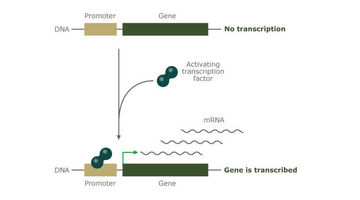Scientists at Plant & Food Research have worked out why some apples are red-fleshed and others white-fleshed. They found a protein called MYB10 in apple, then showed that MYB10 was a transcription factor that controlled the production of anthocyanin (the red pigment in apple flesh). Richard Espley, who carried out much of the research, describes the genetic techniques that were used to help understand the function of MYB10. He also explains why red-fleshed apples have more MYB10 and more anthocyanin than white-fleshed apples.
Questions to consider
The transgenic apple plants that Richard describes are red in every tissue, but red-fleshed apple plants have red apple flesh only. Students could investigate why this might be.
How might the information from Richard’s team about the genetic basis of red flesh in apples affect apple breeding programmes?
Teaching points
To learn more about one of the techniques the team used to explore the function of the MYB10 protein in apple, see our interactive Making a transgenic plant.
Transcript
Richard Espley (Plant & Food Research)
We confirmed that this MYB transcription factor from apple could control the anthocyanin pathway, first of all by literally infiltrating it into a completely unrelated species, in this case, tobacco. We actually infiltrate just the leaf of a tobacco plant – it’s a very simple assay – and because it’s all to do with colour, we noticed quite quickly within a few days that that patch that we’d infiltrated actually started going red. So that means the apple gene was able to elevate all these anthocyanin genes in tobacco itself, and that gave us a lot of confidence that this was the right gene.
So the big test really was then to over-express that gene in apple itself. So we transformed apple with this MYB gene over-expressed with a promoter which switches the gene on very strongly, and we got back completely red plantlets, completely red trees, red leaves, red bark, red roots, you name it, and in the end, we got completely red fruit, fruit flesh and fruit skin.
So why are some apples red-fleshed and some white? Well, the reason for that is to do with a small rearrangement in the promoter of the MYB gene. Now ordinarily, in a white-fleshed apple, the MYB transcription factor is able to bind its own promoter – that effectively switches itself on – but in those red-fleshed varieties, there is a little mutation in the promoter, and the binding area that the protein normally binds to is replicated another 5 times, so it means that much more of the protein combined to the promoter. So effectively, it’s elevating itself very, very strongly and it can then elevate the whole anthocyanin pathway.
Acknowledgement
Additional footage from Plant and Food Research



